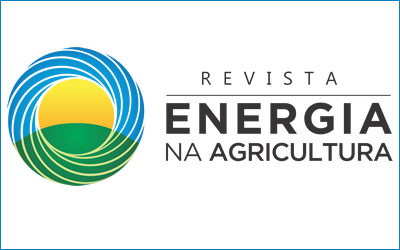CRESCIMENTO INICIAL DE ALGODÃO CULTIVADO EM PLINTOSSOLO PÉTRICO CONCRECIONÁRIO
DOI:
https://doi.org/10.17224/EnergAgric.2020v35n3p360-369Resumen
CRESCIMENTO INICIAL DE ALGODÃO CULTIVADO EM PLINTOSSOLO PÉTRICO CONCRECIONÁRIO*
MARCIO NIKKEL1, SAULO DE OLIVEIRA LIMA2
* Parte da Tese de Doutorado do primeiro autor.
1 Programa de Pós-Graduação em Produção Vegetal, Universidade Federal do Tocantins, Campus Gurupi, Rua Badejós, Lote 7, Chácaras 69/72, Zona Rural, CEP 77402-970, Caixa Postal 66, Gurupi, Tocantins, Brasil, markel.26@hotmail.com.
2 Programa de Pós-Graduação em Produção Vegetal, Universidade Federal do Tocantins, Campus Gurupi, Rua Badejós, Lote 7, Chácaras 69/72, Zona Rural, CEP 77402-970, Caixa Postal 66, Gurupi, Tocantins, Brasil, saulolima@uft.edu.br.
RESUMO: O centro-norte do Brasil é uma região com forte presença de solo concrecionário, que apesar de apresentar desvantagem do ponto de vista agronômico, não impede sua utilização na agricultura, pecuária ou silvicultura. Mediante a observação de estandes agrícolas com culturas neste tipo de solo, surgiu a hipótese de que concreções de petroplintita interferem negativamente. O objetivo do trabalho foi de verificar o crescimento e desenvolvimento de algodão (Gossypium hirsutum) cultivado em solo com a presença de nódulos de petroplintita e na ausência deles. Plintossolo Pétrico Concrecionário foi coletado na camada 0-0,20 m e parte do solo foi peneirado de modo que concreções maiores de 3,10 mm de diâmetro fossem retiradas, deixando assim dois tratamentos, solo com concreções e sem concreções petroplintita. O algodão cultivado em solo sem petroplintita teve maior crescimento aos 21 e 28 dias após a emergência (DAE), assim como maior taxa de crescimento absoluto. Médias de área foliar também foram maiores no algodão cultivado em solo sem petroplintita, 94,36 cm2, ao passo que plantas de algodão cultivadas em solo com petroplintita tiveram média de 46,80 cm2. Assim sendo, conclui-se que concreções de petroplintita interferem no desenvolvimento e crescimento do algodoeiro.
Palavras-chave: concreções, petroplintita, culturas anuais, restrição radicular, manejo do solo.
COTTON INITIAL GROWTH CULTIVATED IN CONCRETIONARY PETRIC PLINTHOSOL
ABSTRACT: The central-north of Brazil is a region with strong presence of concretionary soil, which, despite presenting disadvantages from the agronomic point of view, do not prevent their use in agriculture, livestock or forestry. Due to the observation of agricultural stands with crops in this type of soil, is hypothesized that plinthite ironstones concretions in the soil interfere negatively. The objective was to verify the growth and development of cotton (Gossypium hirsutum) cultivated in soil with the presence of plinthite ironstones and in the absence of them. Concretionary Petric Plinthosol were collected in the 0-0,20 m layer and part of the soil was sieved so that concretions larger than 3.10 mm in diameter were removed, thus leaving two treatments, soil with and without plinthite ironstones. Cotton grown in soil without ironstones showed higher growth at 21 and 28 days after emergence (DAE) as well in the absolute growth rate. Means of leaf area were bigger on cotton cultivated soil without ironstone, 94,36 cm2, while cotton growth in soil with ironstone showed means 46,80 cm2. Therefore, it is concluded that plinthite ironstones concretions interfere in the development and growth of cotton crops.
Keywords: concretions, plinthite ironstones, annual crops, root restriction, soil management.
Descargas
Publicado
Cómo citar
Número
Sección
Licencia
Esta revista proporciona acesso publico a todo seu conteúdo, seguindo o princípio que tornar gratuito o acesso a pesquisas gera um maior intercâmbio global de conhecimento. Tal acesso está associado a um crescimento da leitura e citação do trabalho de um autor. Para maiores informações sobre esta abordagem, visite Public Knowledge Project, projeto que desenvolveu este sistema para melhorar a qualidade acadêmica e pública da pesquisa, distribuindo o OJS assim como outros software de apoio ao sistema de publicação de acesso público a fontes acadêmicas.





